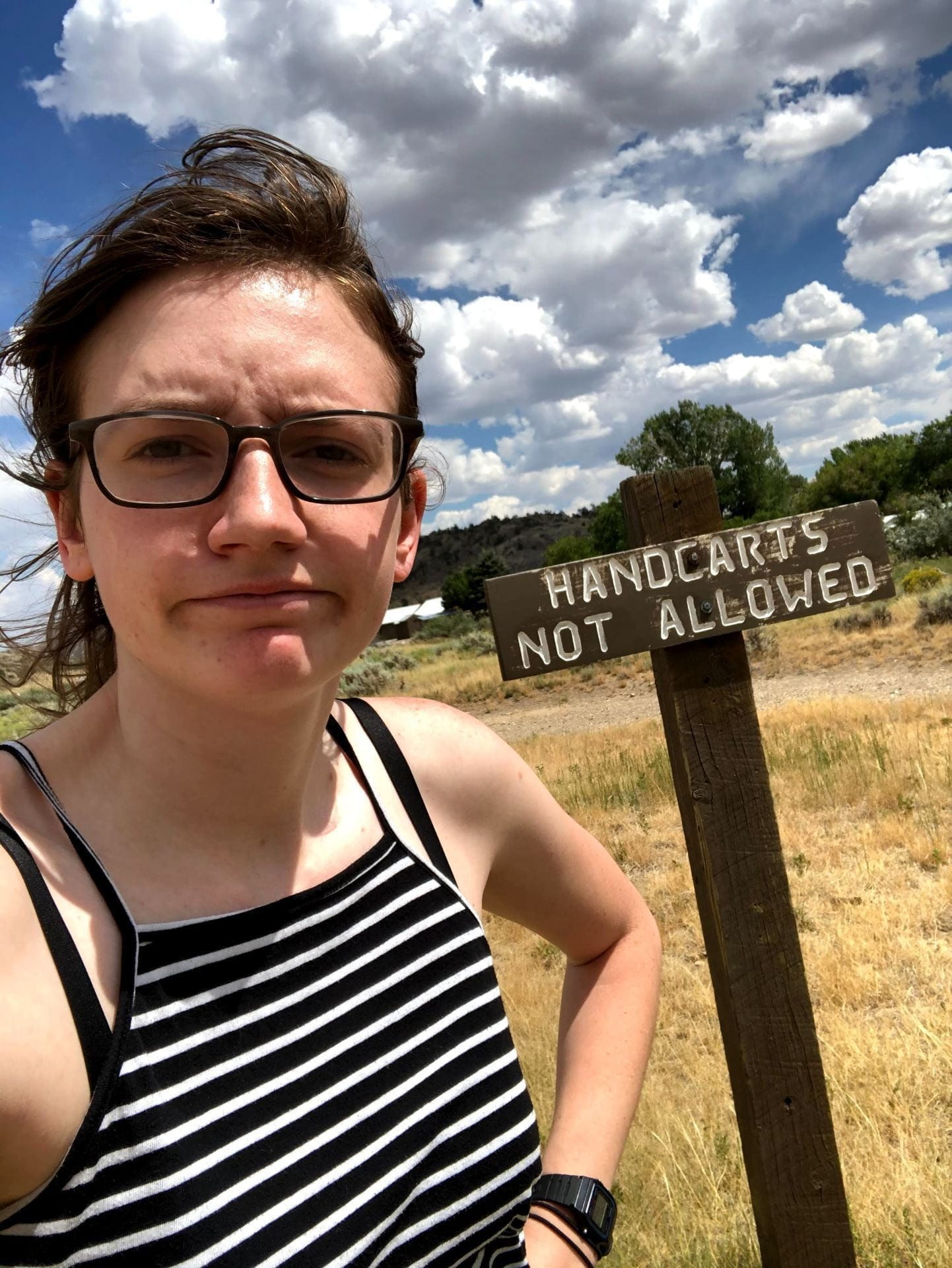Pioneering Mormon Memory
By Tilda Wilson

On my drive back to Ithaca from Utah in the Fall of 2020, I took a few detours to monuments and museums related to Mormon history. I was raised Mormon in a majority Mormon area, so most of what I was seeing was familiar to me—either from Utah history lessons in elementary school or gatherings with our church youth groups. Though the content was largely the same, the lens through which I was looking at it all was not. I was starting the process of research for my thesis, which meant using the analytical and observational framework I learned in “Introduction to Public History” and in the PHI’s Oral History Fellowship to understand the tensions surrounding the history of Mormonism’s founder, Joseph Smith. I was interested in the historical content as the sites portrayed it, but I was also taking the time to think about the choices that come with any re-telling of history. I wanted to find out how the Mormon monuments and museums I visited (as well as the biographies and church histories I read) both result in and react to larger cultural conversations surrounding Joseph Smith and Mormon church history.
Later in the year and at the beginning of 2021, I did oral history interviews with fifteen Mormons and former Mormons about the way they learned about Joseph Smith, and how their perception of him shifted as they got older. Most of the people I talked to learned about Joseph Smith among family members and at the historic sites or monuments that mark significant places in the timeline of his life and church. As children, many of them said they would’ve described Joseph as heroic and infallible, and after visiting the same places, it was easy for me to understand why. On my tour through the Log Home an hour North of Cornell in Palmyra, I forgot about everything I’d already learned about Joseph. I imagined him as a kind and thoughtful teenager who prayed and sought out religious understanding. Reflecting as I left, I thought through the things that weren’t mentioned in that reconstruction of Joseph Smith’s childhood home. Should the fact that Joseph Smith coerced almost a dozen teenagers into marriage thirty years after the period they were depicting be mentioned in a site built specifically to talk about his childhood? Perhaps not, but if positive stories like the one portrayed in the Log Home make up an entire perception of a historical figure, it can be jarring to find out as an adult that there’s more to his story than that.

Joseph Smith’s history is particularly fraught. Much of Mormon belief stems from the trustworthiness and piety of Joseph Smith, and encountering historical narratives that are not grounded in Joseph’s veneration forced many of the Mormons and former Mormons I talked to re-evaluate entire belief system. Though religious histories are an extreme case, however, everyone is emotionally tied to history. In recent years many of the histories that made up the average American elementary schooler’s understanding of the past are being re-evaluated, and rightly so. The amount of controversy and vitriolic discourse that surrounds these narrative shifts is emblematic of the pain of re-evaluation, particularly when it comes to histories that large groups of people are ethnically or religiously or ancestrally tied to.
By the end of my journey to visit the monuments to a cherry-picked version of the stories of Joseph Smith and many of my own ancestors, I felt more tied to and engaged in the past then I ever did visiting those same monuments growing up. Facts on their own are rather bland, but when I’m given the chance to ask “Why those facts?” or “Why invest in this memory?” with regard to the present, history feels dynamic. I want to be part of the process of remembering my ancestors, and I want part of that process of finding ways for me and others like me to understand the parts of our history that aren’t a cause for celebration.
Tilda Wilson is a senior in the History department, graduating in December 2021. She was part of the first oral history fellowship at the start of 2020, and is interested in the intersections between history and media. More of her work can be viewed at tildawilson.com.

